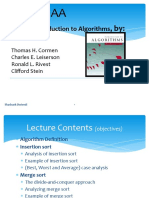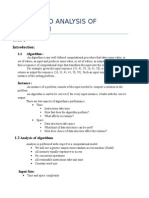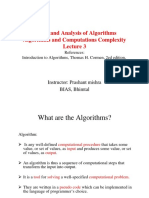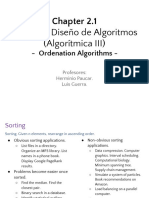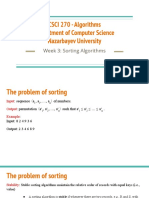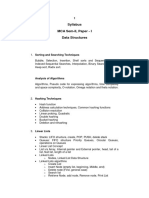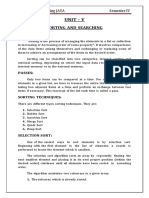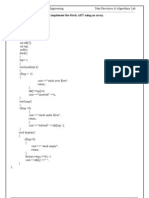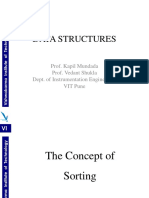0% found this document useful (0 votes)
13 views21 pagesFall2022 Week1.2
The document discusses simple sorting algorithms including Insertion Sort, Selection Sort, and Merge Sort, highlighting their correctness and efficiency. It explains the sorting problem, the divide-and-conquer approach used in Merge Sort, and analyzes the running times of these algorithms. The conclusion is that Merge Sort is asymptotically faster than Insertion Sort for large input sizes.
Uploaded by
MJCopyright
© © All Rights Reserved
We take content rights seriously. If you suspect this is your content, claim it here.
Available Formats
Download as PDF, TXT or read online on Scribd
0% found this document useful (0 votes)
13 views21 pagesFall2022 Week1.2
The document discusses simple sorting algorithms including Insertion Sort, Selection Sort, and Merge Sort, highlighting their correctness and efficiency. It explains the sorting problem, the divide-and-conquer approach used in Merge Sort, and analyzes the running times of these algorithms. The conclusion is that Merge Sort is asymptotically faster than Insertion Sort for large input sizes.
Uploaded by
MJCopyright
© © All Rights Reserved
We take content rights seriously. If you suspect this is your content, claim it here.
Available Formats
Download as PDF, TXT or read online on Scribd
/ 21


